On November 18, 1994, Star Trek: Generations premiered in theaters in the United States, the first movie featuring the cast of Star Trek: The Next Generation following the show’s series finale earlier that same year. Directed by David Carson, from a script by Ron Moore and Brannon Braga, the movie went on to gross a respectable $120,000,000 worldwide.
It is probably safe to say that Generations is not a movie that features highly on many people’s lists of their favorite Star Trek movies. And fans are not alone in seeing the film’s flaws; there has been plenty of critical introspection from the writers and producers about why Generations failed to resonate as strongly with fans as the series finale, “All Good Things,” also penned by Moore and Braga. Look no further than Moore and Braga’s commentary track on the Generations DVD for honest self-criticism about their work.
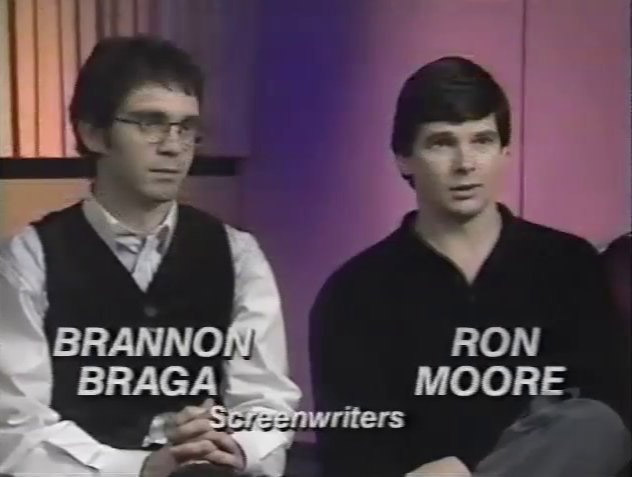
Moore and Braga have complained about strict edicts from the studio about what the movie must contain, a general sense of exhaustion diving into production of the first Next Generation feature before the show’s television production had even wrapped, and struggles with figuring out the ending for the movie that required extensive reshoots of much of the final confrontation between Picard, Kirk, and Soran on the surface of Veridian III.
Fans complain about reused visual effects, significant plot holes to the story (why didn’t they use the Nexus to go back much earlier to stop Soran?), the bizarre Picard family sequence in the Nexus, and whether Captain Kirk’s death did justice to the character. Many of those criticisms are fair.
But at the movie’s 25th anniversary, it’s time for a reconsideration of the merits of Star Trek: Generations. Here are five reasons why Generations deserves another look!
The Enterprise-D Never Looked So Good
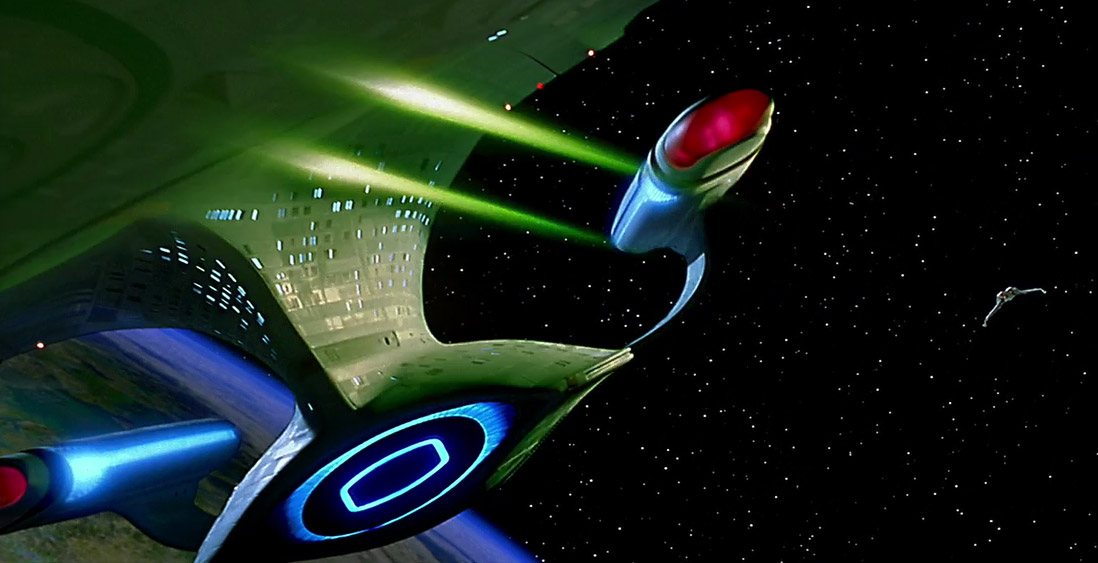
Star Trek: Generations is a gorgeous movie. The Generations design team faced a number of challenges with utilizing the Enterprise-D sets from The Next Generation movie.
First, the sets had been designed for viewing on the square television screens of the era, and not for a widescreen movie presentation. Second, after seven years of use the sets were beginning to show their age. That largely did not matter for the standard definition television sets of the early 1990s, but on the big screen it mattered a lot.
For the next movie, this problem would be solved easily; the Enterprise-D was destroyed in Generations and so the Enterprise-E sets could be designed to be both widescreen and big screen friendly. But for Generations, it required a combination of steps: redesigning certain sets like the main bridge, and lighting the sets very differently from the TV show.
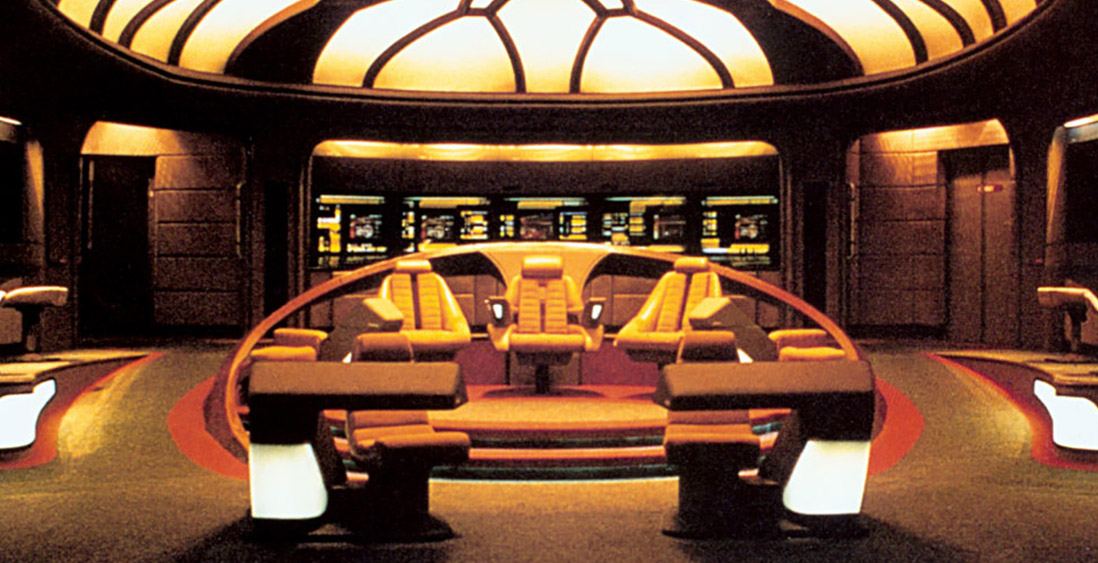
And the results are magnificent. The Enterprise-D never looked better than it did in Generations, thanks largely to production designer Herman Zimmerman and cinematographer John A. Alonzo. The Enterprise-D’s main bridge gains more scale and visual interest with the addition of a new level for the center seats — similar to the presentation of the bridge in the episode “Yesterday’s Enterprise” — and new consoles to port and starboard.
But the Ten Forward scenes, as well as the scene between Picard and Troi in the captain’s quarters, are the real standouts. The lighting is so different that you would almost be forgiven for thinking they are entirely different sets, bringing out new features and personality to the respective spaces.
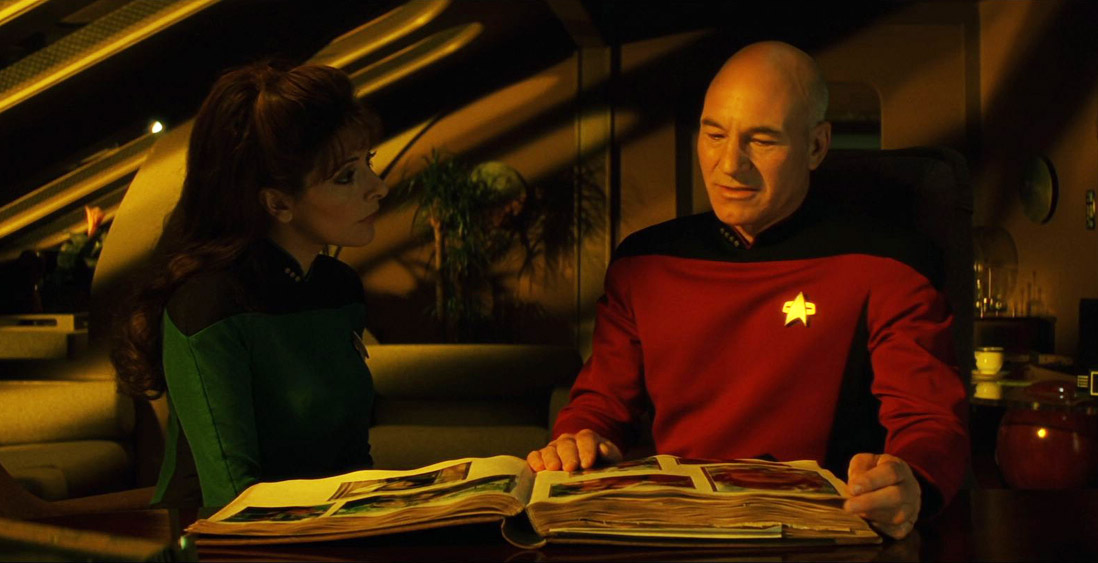
Moving to the big screen also allowed for the creation of a new Enterprise-D set to help convey the ship’s scale and technological advancement; the cavernous Stellar Cartography lab.
Given the constraints the production team were working under getting The Next Generation television production ready for their first movie, they absolutely knocked it out of the park. Generations looks great.
Descent to Veridian III
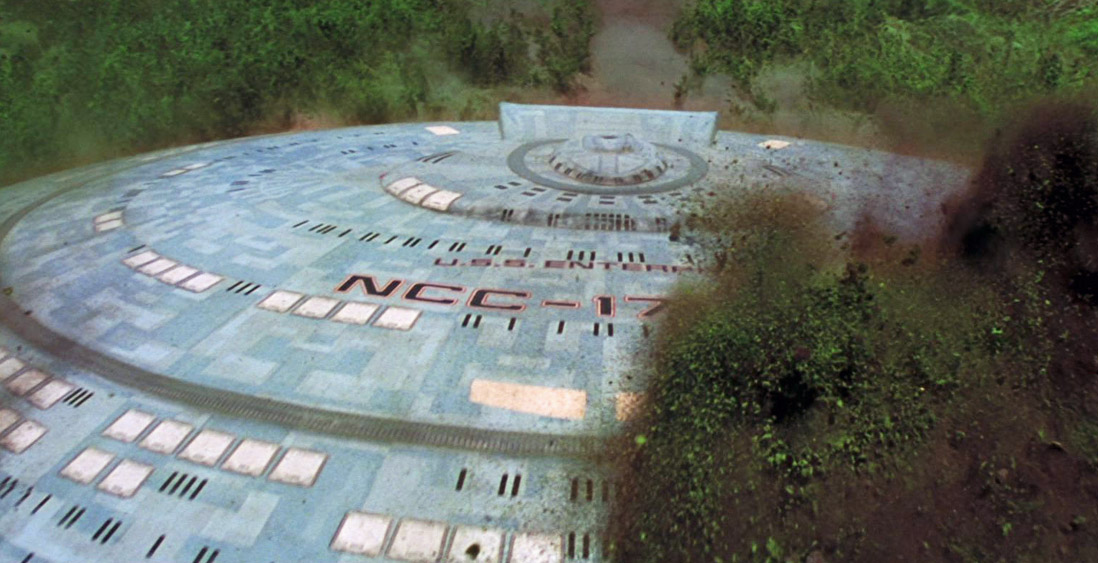
Generations also features one of the most cinematic scenes in Star Trek history, the crash of Enterprise-D saucer section. Say what you will about the plot holes of the battle that preceded the destruction of the Enterprise — a 40 year old Klingon Bird of Prey is really able to take out the Federation flagship? — once this scene is in motion it is gripping, intense, and cinematic.
As described above, the decision to destroy the Enterprise-D was largely a practical one that allowed for the construction of all new sets that could be specifically designed for the needs of the cinema, but the production necessities for an eighth Star Trek film does not detract from the fact that it is an amazing sequence.
Some of my favorite moments of Star Trek involve seeing the crew of a Starfleet ship being good at their jobs. And we get a lot of grace under pressure in this scene, including the rush of the crew to evacuate the star drive section, which finally gives you the sense that the Enterprise is inhabited by over 1,000 people, to Doctor Crusher and her medical crew continuing to care for patients after evacuating them from sickbay, to the bridge crew remaining at their posts as the ship is literally crashing around them.

And it would be impossible to discuss this sequence without also crediting the incredible model work involved in filming the saucer crash sequence. Yes, Generations is rightly criticized for some reused effects shots like the exploding Klingon ship first created for The Undiscovered Country, but it is not praised enough for the incredible visual effects it does have.
The Enterprise saucer section crash lands onto the surface of a planet, and we see the whole thing play out as it leaves a massive scar across the surface of the planet. The shots were achieved by constructing a model of the Enterprise saucer over ten feet in diameter, and building a large diorama of the landscape around the ship as it touches down. It was an incredible feat of model making that would be entirely rendered with CGI if the movie were made today.
Introducing the Enterprise-B
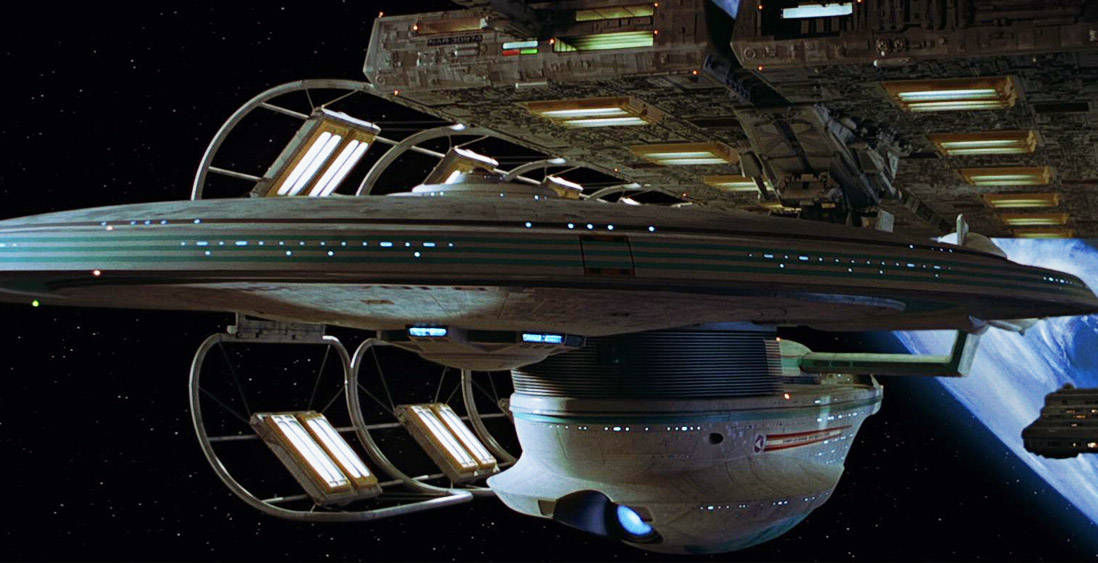
Generations fills in the final gap in the Enterprise lineage up to that point, revealing the USS Enterprise NCC-1701-B in all its glory. To that point, fan knowledge that the Enterprise-B was Excelsior class was based purely upon the Enterprise ship models displayed on the wall of the Enterprise-D observation lounge.
The ship, which was modified from the original Excelsior studio model by John Eaves, is revealed at the end of an artfully suspenseful opening credits sequence following a bottle of champagne through space as it crashes onto the hull of the Enterprise-B for its dedication ceremony.
And even though Captain Harriman comes off in this movie unprepared for his posting, I enjoy any time we get the lineage of the Enterprise fleshed out a bit further. It was also a nice touch, in a movie that has a number of themes about time and family running through it, that Hikaru Sulu’s daughter Demora serves aboard the ship.
And while it may not be directly tied to the movie itself, Harriman’s character undergoes a serious rehabilitation in the Star Trek novels. I highly recommend checking out David R. George III’s Serpents Among the Ruins, a Lost Era novel that tells the story of the “Tomed Incident” that was alluded to during The Next Generation. The book has a starring role for Harriman, in which he acquits himself far more admirably.
Tolian Soran: A Good Villain
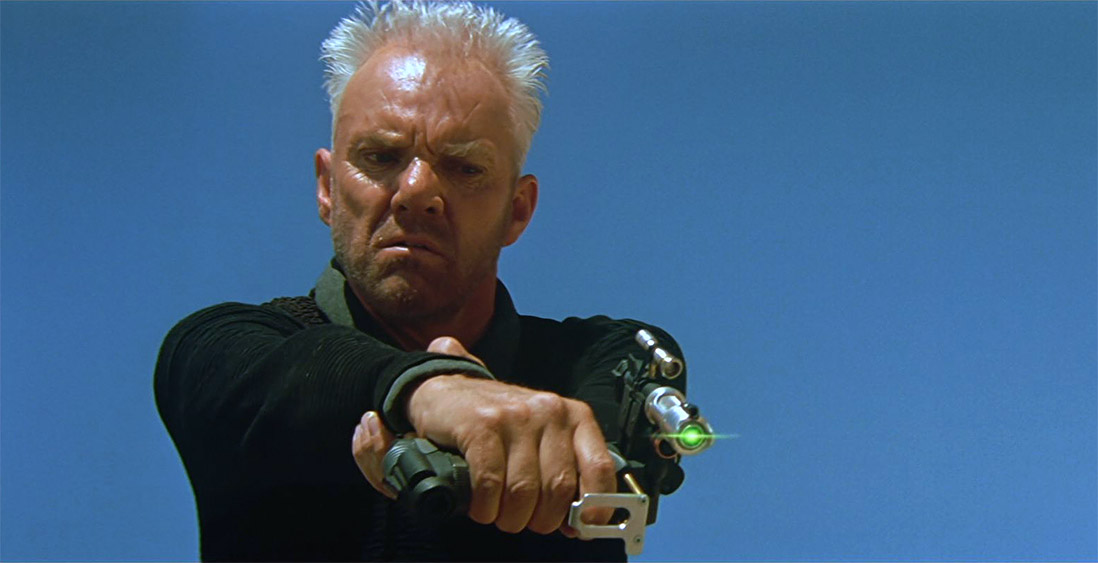
Star Trek movies have frequently struggled with their villains. But Malcolm McDowell’s performance as Tolian Soran is underrated by fans. Soran is a tortured soul driven to extreme actions by his grief. This is a universe that dealt the El-Aurians the worst hand imaginable; assimilation by the Borg and destruction of most of their race. Some chose to deal with their grief by seeking out those they could help, like Guinan.
But inevitably, there would be those El-Aurians who would be driven mad by anger or grief, as Soran is. And seeing the implications of that, for such an otherwise intelligent race to be bent towards evil ends, is a scary one. Though they hardly share a scene together, Soran’s slide into darkness merely reinforces why Guinan is such a great character, because faced with exactly the same set of choices she dedicated her life to helping people.
The movie’s best relationship is also not between the two characters on the poster, Picard and Kirk. It’s the relationship between Picard and Soran, as Picard gets a firsthand look at what becoming consumed by anger and grief over the recent loss of his family and heritage can do to a man. The interplay between Soran and Picard on Veridian III on the nature of time, revenge, evil, and the Borg is great, thoughtful dialogue, that largely gets ignored in the rush towards the big action sequence and the reveal of Kirk.
“You can make a difference.”
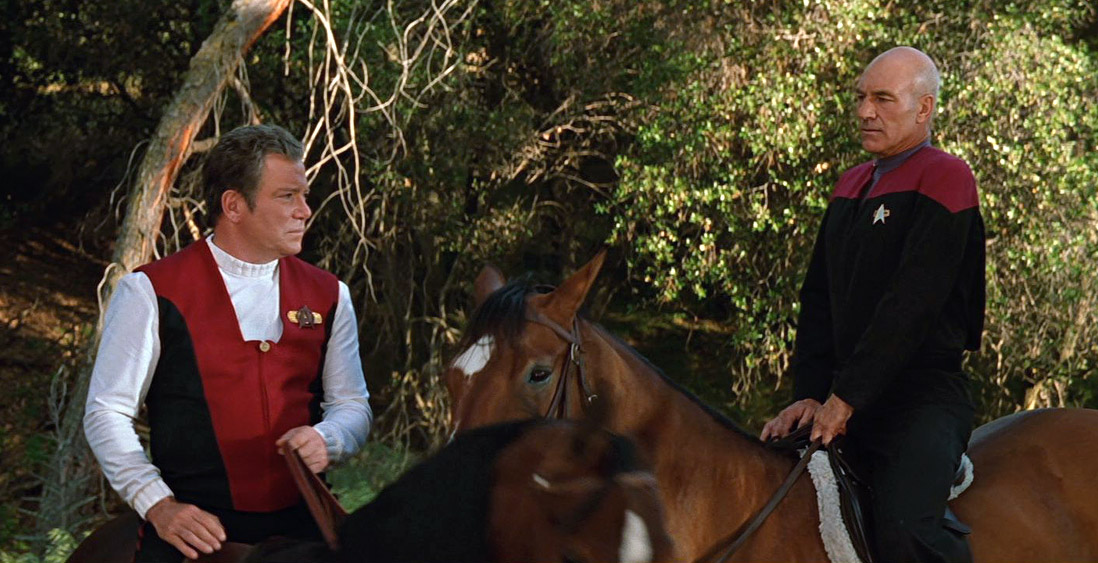
While there is plenty to be disappointed about in the meeting between Picard and Kirk, and Kirk’s eventual death at the end of the movie, there are also some fantastic exchanges that drive right at the heart of these two men and, despite their many differences, the things they share in common.
“Don’t let them promote you, don’t let them transfer you. Don’t let them do anything that’ll take you off the bridge of that ship, because while you’re there you can make a difference,” Kirk tells Picard after they ride horses together through a very Southern California-looking Idaho countryside.
And ultimately, this is the essence of what both men share; a deep and abiding devotion to the ideals of Starfleet expressed through command of a starship. Kirk, who at this point in his career has been captain, admiral, and then captain again, is able to impart the wisdom upon Picard to understand the place he values being the most.
The upcoming Star Trek: Picard series will show us something of what happens after Picard does relinquish the center seat for the admiralty, and I hope we will get some kind of reflection upon that choice and whether Kirk’s advice was borne out. Given Picard’s unhappy retirement from Starfleet after becoming admiral, it seems that it might.
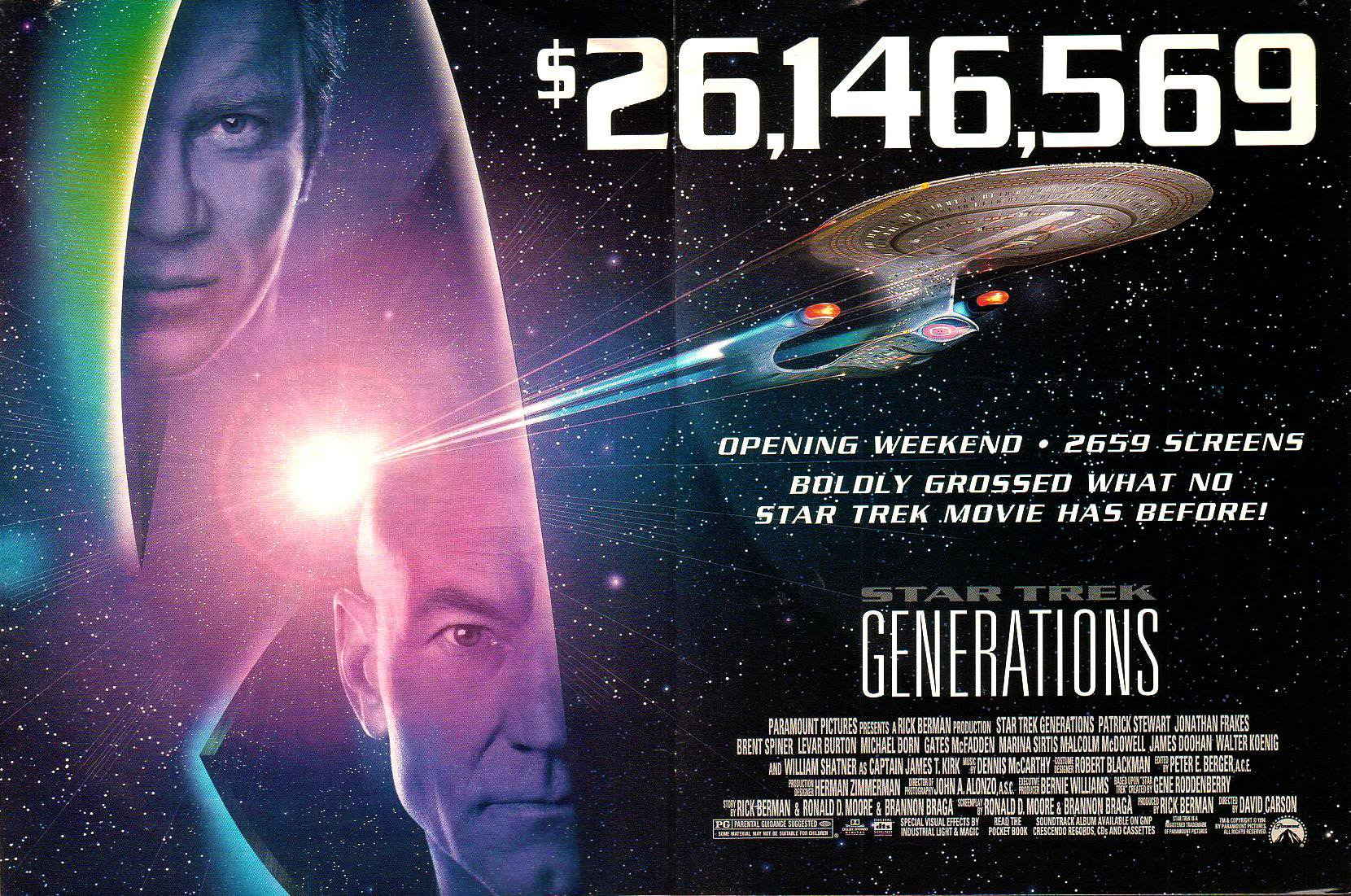
Star Trek: Generations is not a perfect movie, by a long shot. But there are lots of good reasons to give the maiden voyage of Captain Picard and crew on the big screen a second look. And what better time to do so than on the movie’s 25th anniversary?
